Caucasian amanatism. Forgotten Social Institute
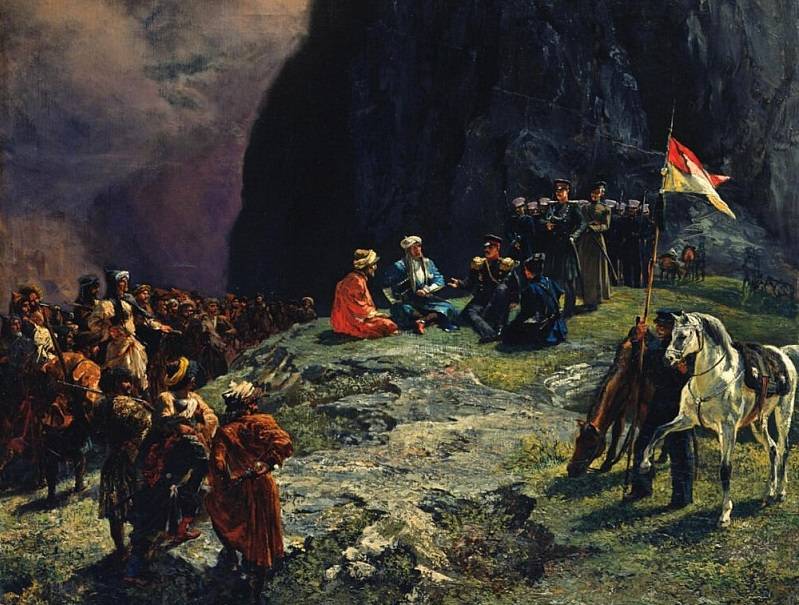
It is generally accepted that amanatism is a simple hostage-taking, because the word "amanat" is translated as "hostage". Instantly in the imagination of the layman an ugly picture of a handful of citizens on the floor of a bank under the trunks of an automatic appears weapons, a kidnapped man, hidden in an old garage on the outskirts of the city, or a group of tourists languishing in a hole somewhere in the Middle East.
All this, of course, has nothing to do with Amanatism as a diplomatic, political and social institution.
The word "amanat" itself, for example, is understood in Islam as the obligation to preserve something God or man has entrusted to you and at the same time is the most trusted entity. At the same time, both intangible values and quite tangible objects can act under the amanat. So, the amanates of Allah, sent down to people, appear soul, body, Islam and even time. But the amanats given by society include family and property, debts and secrets told under the strictest secret. And a careful and careful attitude to the amanat is considered a sacred duty. Some of these subtleties eventually turned into a military-political interpretation of the amanat.
Amanatism itself has been known since ancient times. Do not confuse it with a banal predatory raid, followed by theft of people into captivity for resale or exchange. And, of course, in any way, the invention of Russian amanatism was not in principle. It was practiced in Spain and the Ottoman Empire, in Austria and Italy, in Ancient Russia and the Golden Horde, etc.
Amanat was not just a hostage, he was a living pledge of trust, a guarantee of compliance with a completely formal agreement. And both parties should follow the terms of the contract, including the one with the high-ranking amanat in custody. His health and comfort of stay was entirely on the conscience of the party who took the amanat. The murder of such a "hostage" was considered not just some kind of shame for conscience, but it had quite tangible consequences in the political arena, undermining the reputation and status of this or that ruler and, as a result, the state that he controlled.
Amanatism in the Caucasus is a necessary compromise
The Caucasus, in which Amanatism also existed since ancient times, during the most active expansion of the borders of the Russian Empire in its direction, i.e., in the 18-19th centuries, was a boiling cauldron from principalities, kingdoms, khanates, shamkhalms, mysisstva, USMs, communities and quasi-state associations that quickly appeared and disappeared at the same speed.
For example, by the second half of the 18th century in the west of the Caucasus there were lands of disparate Circassian tribes and Nogai nomads, Abkhazia and Svaneti, Megrelia and Guria, etc. In the center were Kabarda and Ossetia, the lands of the Ingush and Chechens, divided into separate teips and periodically dependent on Kabardian and Kumyk rulers. In the west, a real carpet lay: Avar, Kyurinsky, Kazikumukh, Cuban, Sheki, Shirvan, Baku, Derbent and Ganja khanates, Tarkov shamshalstvo, Tabasaran Maysumism and Kaitag usmism, and this is far from all the entities with a quasi-state.
All this wealth was in constant motion. Unions were created and collapsed, some khanates or principalities were magnified, levying a tribute to their neighbors, others instantly disappeared. At the same time, princely and khan families were extremely mixed. For example, the famous Derbent warrior Tuti-Bike, being married off by her own brother to her ally Fat ali Khan, soon faced a terrible choice, because brother and husband began to quarrel. When the army of brother Tuti-Bike Amir Gamza appeared at the walls of Derbent, she sided with her husband and led the defense of the city, fighting, in fact, with her own native blood.
Naturally, in such a situation, any, even the most profitable contract, held together by senior officials, easily lost all power. Even if the prince or the khan himself asked for Russian citizenship, after a while his own nobles (younger princes, bridles, viziers, etc.) could persuade the ruler to make a profitable traditional raid or completely replace the obstinate "superiors". After this, a military expedition of the Russian Empire followed with the goal of forcing to fulfill voluntarily assigned obligations. Such expeditions often did more harm than good.
That is why the institution of Amanatism has become a compromise choice. In addition, the Caucasus was better acquainted with amanatism than the Russian troops. Moreover, high-ranking amanates ruled entire principalities. For example, before becoming the prince of Abkhazia, Kelesh Bey Chachba was an amanate in Constantinople with "friendly" Ottomans.
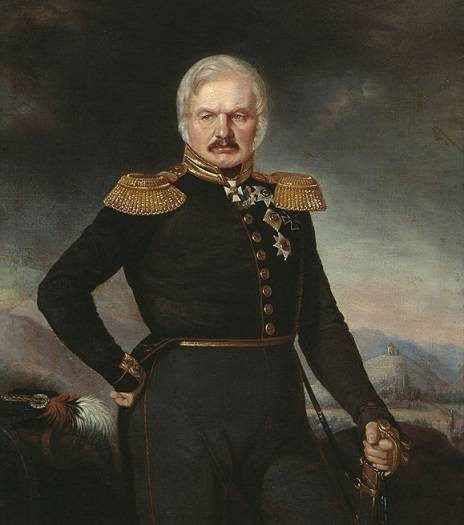
Alexey Petrovich Ermolov
It is generally believed that it was Alexei Petrovich Ermolov who became the main initiator of amanatism and almost its author. As it became clear, he could not be an author in principle, and the fact that he deftly combined military and diplomatic stiffness in his energy was true. Taking people into amanats, Ermolov set up firm, but justified and quite feasible conditions. Often these conditions were only a repetition of previously concluded contracts.
And you definitely don’t need to think that Ermolov practiced amanatism alone or planted this institution in the Russian army. Amanatov in the form of princes was taken, for example, by General Ivan Petrovich Delpozzo in Kabarda. These princes, by the way, enjoyed great freedom until they constituted an armed conspiracy. Only after this the princes were put in the Kizlyar fortress. Moreover, Delpozzo was once a hostage in the Caucasus himself, but not on a contractual basis, but on a field of profit.
The Georgian prince also took the Prince of Georgia, General Yegor (George) Evseevich Eristov-Ksansky. Tired of the raids due to the Terek and empty promises to no longer hold them, then Colonel Eristov not only conducted a tough military expedition, but also took several noble Chechens with him as guarantees for the fulfillment of the promised peaceful coexistence.
There were several curious cases. Before the famous campaign in Khevsuria (Khevsureti, a region in the north-east of modern Georgia) in 1813, Lieutenant General Fedor Fyodorovich Simanovich decided to guarantee the loyalty of the Pshavs (considered an ethnographic group of Georgians with different versions of origin). After conducting proper reconnaissance of the social structure, Simanovich refused to take any elders as amanats, but took as amanats ... Pshavian cattle of several tens of thousands of animals. Russian troops began to graze cattle, and the Pshavs from unreliable subjects turned into the best guides and scouts.
How Amanates Contained
Amanats were usually kept in fortresses (Georgievskaya, Kizlyarskaya, Nalchikskaya, Astrakhan, etc.), although there were many exceptions. Naturally, this content paints a picture of some stony zindan or the casemate of Count Monte Cristo, but again, the philistine imagination will lie.
Of course, the general picture of the content of amanates cannot be compiled, again thanks to the disparate specificity of the Caucasus. Each was kept in accordance with the significance of the lands that gave it away and on the basis of any specific agreements. Some had the right to carry cold steel and walk under the supervision of guards or proxies near the fortresses and even travel to neighboring cities or villages for some time. Others were kept only inside the walls, though in a separate house, as a rule, with a garden next to it. Amanatov was periodically changed, so the "hostage" could be at the fortress from one year to 15 years, if the contract was violated by the party that gave the amanat.
Moreover, there was even a certain instruction for the treatment of amanates. It was appropriate
Educated amanats could conduct free correspondence, had the right to write out the necessary books. The dining table of the amanat never gave way to the meal of the commandant of the fortress, and sometimes even exceeded it. Amanats have always been provided with doctors and other necessary staff.
The entire content of the amanates fell on the treasury of the Russian Empire. Some lived on the level of officers, but others, thanks to the same political and diplomatic conflicts of the Caucasus, lived like real princes. For example, after General Pavel Dmitrievich Tsitsianov persuaded the Karabakh Khanate with the capital in Shusha to join Russian citizenship, he took the oath from the owner of the Khanate Ibrahim Khan. At the same time, the grandson of the ruler was taken to amanats with the annual maintenance of a boy, according to various sources, from a thousand to 10 thousand rubles.
Amanat schools as a way to life
Most often, the children of Caucasian rulers became amanats. With the pacification of the Caucasus and the multiplication of the lands of the empire, the Amanates became more and more. In addition, naturally, none of the Russian officers, taking the amanats, even thought of somehow punishing the children for the sins of their parents. Some communities were so fragmented that they gave up to ten boys at a time. On the one hand, they won’t be able to come up with anything worthy of a group of boys left to their own devices; on the other hand, the empire received an excellent resource for raising an imperial sense of belonging among mountain children.
Awareness of these facts and created a special phenomenon - Amanat schools. In these schools, the Amanates taught the Russian language, mathematics, geography and other sciences. Education and maintenance of students, of course, came from the treasury of the empire. Many mountain boys, who discovered the whole world, showed simply amazing abilities. Some by the end of the first year, quite clearly and efficiently, read books in Russian.
Outstanding amanats were periodically sent to the cadet corps to continue their studies. Later, many of them will constitute real dynasties of the “Russian” officers who fought for the glory of the empire, which they had once been held hostage. So the institution of amanatism eventually became an instrument of socialization, education and just a springboard to life.
Outstanding Amanates of the Caucasus
Amanatov, who became brilliant officers in the Russian army, are numerous. So, Aslamurza Yesiev, who was born in 1836, was taken into amanaty at the age of 9. Soon the boy went to St. Petersburg, where he was enrolled in the Second Cadet Corps. In 1853, he began serving in the Elisavetgrad Hussar Regiment. After six years of service, he was forced to resign due to family reasons.
Yesiev returned to service in 1864 as the commander of the 2nd Hundred Tersko-Gorsky Irregular Regiment. By the beginning of the Russian-Turkish war of 1877-1879, Aslamurza already commanded the Ossetian division of the above-mentioned regiment, distinguishing himself in the Danube army. After the war he joined the detachment of General Skobelev in Turkestan, etc.
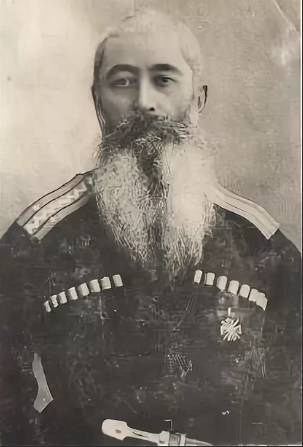
Aslamurza Yesiev
The former Amanat Aslamurza resigned with the rank of lieutenant colonel, proudly carrying the Order of St. Vladimir of the 4th degree, the Order of St. Anna of the 2nd degree, the Order of St. Stanislav of the 2nd and 3rd degree. Esiev spent the last days of his life in the village of Kartsa, engaged in peaceful agriculture, gardening and beekeeping.
Another famous amanate was Aslambek Tuganov, who rose to the rank of general and became the peculiar founder of the Ossetian military intelligentsia. Tuganov, descended from a noble feudal family, was given over to amanates at the age of 4 in 1808. Aslambek was brought up in the family of a Russian colonel, so at the age of 19 he began serving as a private in the Kabardian Infantry Regiment, in which he quickly rose to the rank of officer with the transfer of the Caucasian Mountain Half-squadron to the Life Guard.
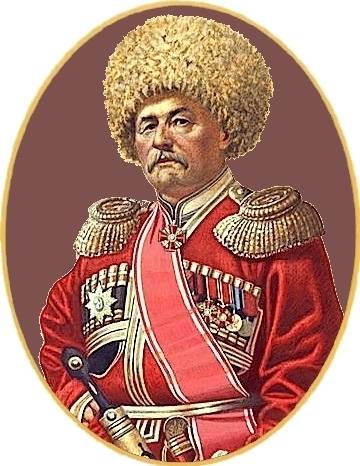
Aslambek Tuganov
The fate of this officer, like many others, deserves a separate material, if not a book. He participated in the Polish campaign and in the Caucasian war, was a convoy of the emperor himself and served as a kind of diplomat, recruiting mountain youth in the ranks of the Russian army. On December 6, 1851, Tuganov was promoted to major general. The list of his awards was long: the Order of St. Anne, St. Stanislav 1st and 2nd degrees, St. Vladimir 1st and 4th degrees, distinction of the Polish Order, etc. The general died in 1868.
The highest and most unfortunate amanat of the Caucasus
The most famous and at the same time unfortunate amanat was the son of Shamil - Jamaluddin. The 10-year-old Jamaluddin got into amanats during the battles for the village of Akhulgo, when Shamil sent him to General Pavel Grabbe to delay the inevitable assault, which threatened him and his murids with death. As a result, Shamil fled, and Grabbe was left with a minor Jamaluddin in his arms.
The boy was quickly sent to Petersburg, where Nicholas I himself took patronage over him, in a sense even replacing his father. Jamaluddin was enrolled in the Alexander Orphan Cadet Corps for noble children who lost their parents. The emperor took an active part in the fate of the boy, talked with him for a long time and took at any time. The boy had a sharp mind and liveliness of character. He was decisively interested in everything, discovering ever new sciences and aspects of life. In 1849, Jamaluddin, with the rank of cornet, was sent to the Vladimir 13th Lancers Regiment. During the service, he fell in love with the daughter of General Peter Olenin Elizabeth, at the same time determined to accept baptism. The future of a professional officer seemed cloudless.
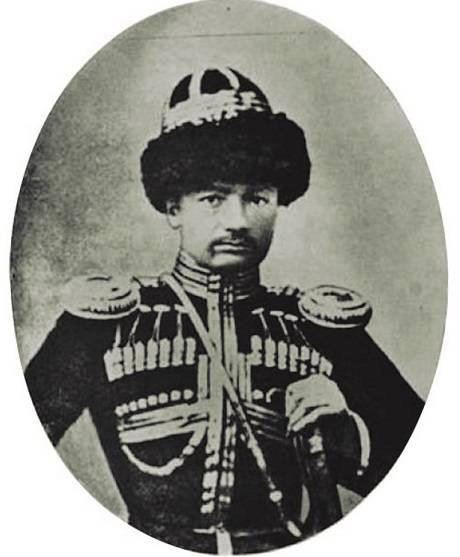
Jamaluddin, son of Shamil
All this time, Shamil continued negotiations, trying to return his son. For these purposes, he even took hostage Prince and General Iliko Orbeliani. True, the demands made by Shamil were so utopian that Orbeliani himself refused freedom under such conditions. After this failure, Shamil made a daring raid on Kakheti, capturing many hostages, including prominent persons of the princely family Chavchavadze. Among the prisoners were women with one-year-old children in their arms. The emperor was in a difficult situation. On the one hand, he did not want to give his beloved Jamaluddin, and on the other, he could not leave Shamil hostages to their own devices.
Jamaluddin was then seconded to Poland with the rank of lieutenant. He did not know what trouble awaited him, continuing to dream of marriage with Elizabeth and read works on mathematics, which he was still interested in in the cadet corps. Soon he was summoned to headquarters in Warsaw, outlining the situation. Jamaluddin was stunned. His life, a new world, officer service, the beloved of a woman - all this collapsed before our eyes. He hesitated for a long time, but was forced to agree.
On March 10 (old style), 1855, an exchange took place near the village of Mayrtup. Jamaluddin warmly said goodbye to his comrades and, taking with him only a lot of books, atlases, paper and pencils as a baggage, wandered towards the family, who solemnly met his son from the "captivity".
Many people close to Shamil noted Jamaluddin’s extraordinary intelligence and education, but a few days after a hot meeting, there was a growing tension between father and son. Jamaluddin persuaded his father to come to terms with the Russian Empire, spoke extremely highly of Nicholas I and admired the Russian army, which, of course, caused his father’s hostility. And as a responsible officer, Jamaluddin could not languish idle, so he inspected the villages, the administrative structure and the troops of Shamil. After that, he came down with extremely harsh criticism of everything he saw. This pushed his son away from his father even more.
True, for some time Jamaluddin managed to moderate the ardor of Shamil, to establish contact with the governor in the Caucasus, General Alexander Baryatinsky. A mass exchange of prisoners began, and Jamaluddin was instructed to put in order the administrative affairs in the North Caucasian imamat. But the openly pro-Russian orientation of his son angered Shamil more and more. Despite the unconditional successes of Jamaluddin, his brothers moved away from him, his fellow tribesmen did not communicate with him, he was kept clear of naibs.
The last straw for the powerful imam was an attempt to secretly meet Jamaluddin with his beloved Elizabeth. Shamil was able to disrupt this meeting. Imam immediately after this married his son against his will to the daughter of his naib Talhig Shalinsky, which finally broke the infinitely lonely Jamaluddin.
The young man began to suffer from chest pains and coughing, walked through the aul like a dumb ghost, as if expecting a tragic end. Shamil, noting this, still loving his son, sent him to the high-mountain village of Karat (now a village in Dagestan), whose climate was considered healing. But the young man continued to fade, not seeing the point in continuing life. Shamil was forced to enter into negotiations with Baryatinsky to send a Russian doctor to Jamaluddin. Baryatinsky sent regimental doctor Piotrovsky.
Piotrovsky diagnosed consumption and loss of vitality in Jamaluddin. The doctor left all the necessary medicines along with the necessary recommendations. But the treatment did not benefit the broken Jamaluddin. On June 26, 1858, the most famous and educated for its time, the amanat died in the village of Karat. The libels immediately spread the rumor that the Russian doctor had poisoned the unfortunate, which, of course, had no basis or even any logic.
Now the mausoleum of Jamaluddin, an amanat and an officer of the Russian army, is still in the same village of Karat.
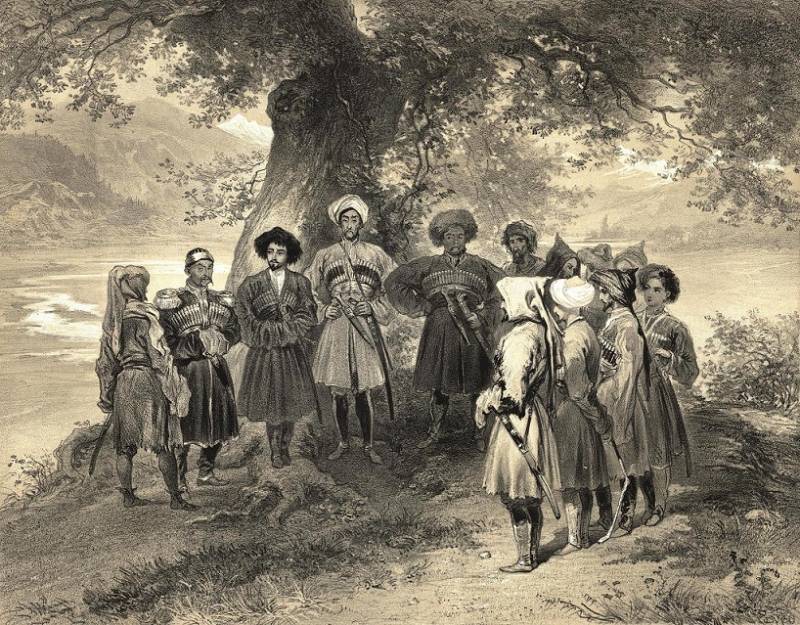
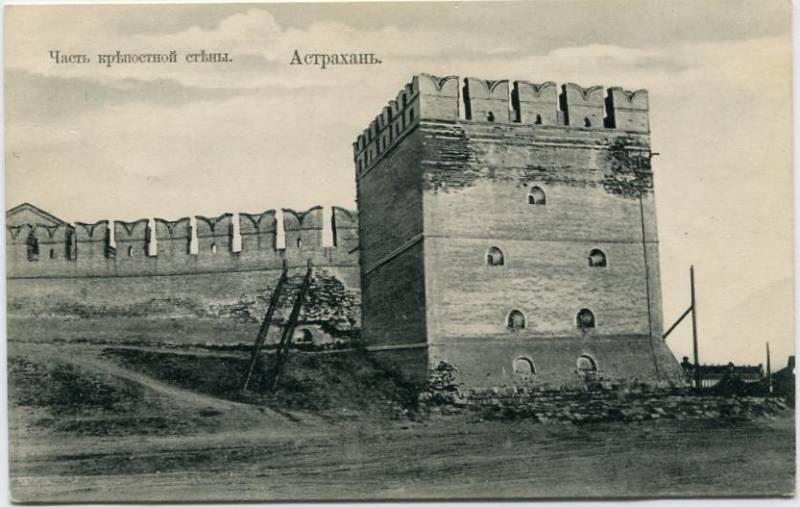
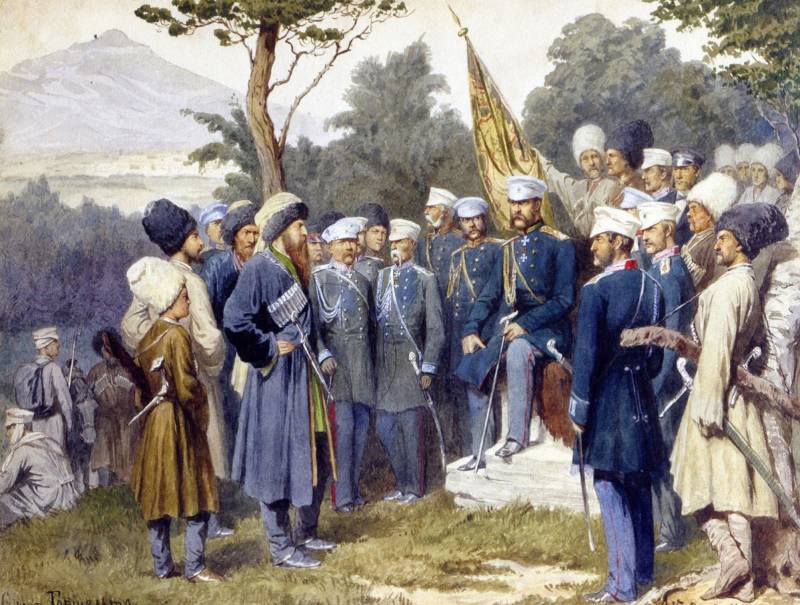
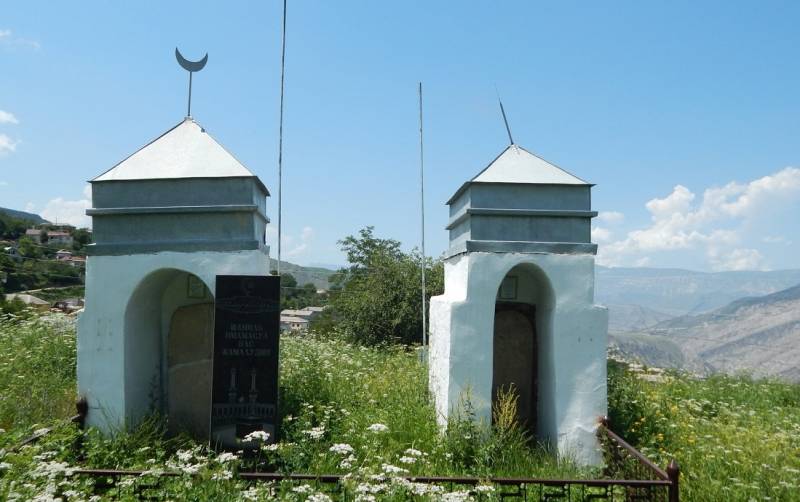
Information